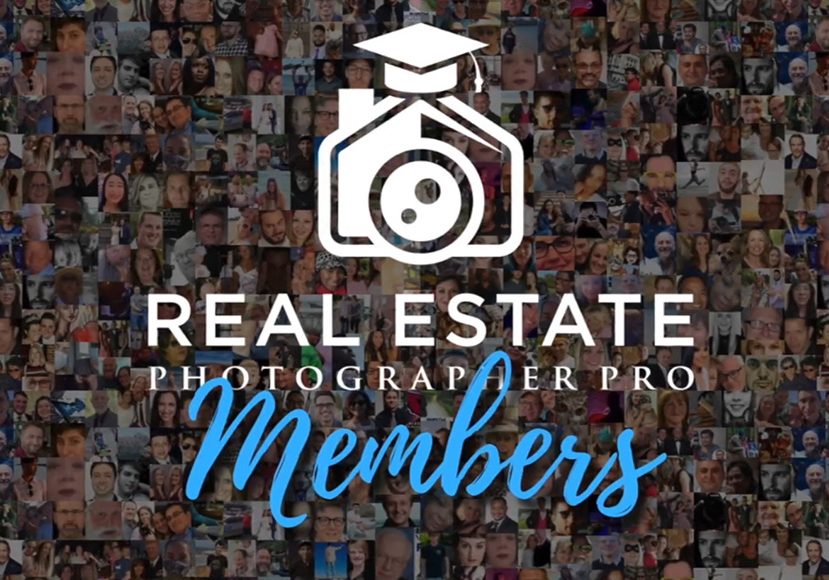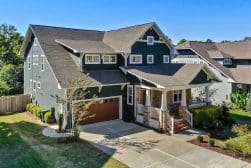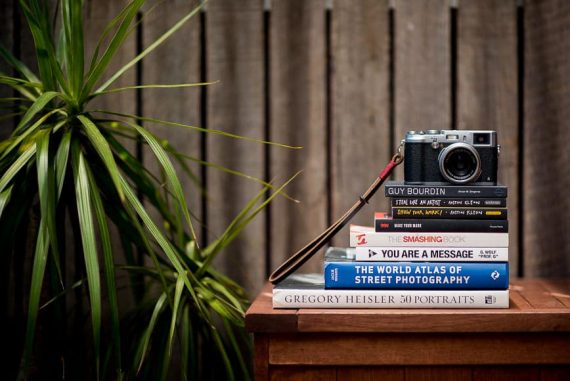
Real Estate Photographer Pro Course User Review (2024)
Can you really earn good money as a real estate photographer by watching a video course... even with zero prior experience?! I tested REPP to find out.
Learn | By Mark Condon | Last Updated: February 6, 2024
This is my review of the popular real estate photography course: Real Estate Photographer Pro (REPP).
Last month I met a guy called Alan who was earning over $3,000 a week taking photos of real estate properties.
Even more amazingly, he’d picked up a camera for the first time less than a year ago.
Alan told me he owed all his success to what he learned from a guy named Eli Jones from Real Estate Photographer Pro.
Naturally, I knew I had to check it out for myself.

Well structured, up to date video course on everything you need to know to start earning money as a REP.
Get a 96% Discount! (limited time)
I’m a wedding photographer, but earning additional income taking photos of houses during the non-wedding season is incredibly attractive.
Even if you’ve never considered taking property photos before, you’ll want to read this Real Estate Photographer Pro review.
Taking photos of houses isn’t anything new, but the demand for good real estate photography is still high.
Successful real estate photographers can make millions… but getting there quickly involves some shortcuts.
I’ve spent two weeks going through everything in REPP to write this review for you.
Hopefully, you’ll find it life-changing too.
What is Real Estate Photographer Pro (REPP)?
- Simplified process guarantees faster success
- Doesn’t require expensive photography gear purchases
- 150 video courses with simplified advice
- Multiple (hundreds) of student success stories
- Invaluable business advice from active CEO
- Case studies provide real-world examples to follow
- Active Facebook group + live Q&A
- Useful presets and discounts
- 100-day money-back guarantee
- Unresponsive support
- Can’t watch the videos when offline
- No flash photography tutorials
- Focus is on lower-end properties
- Some links don’t work
‘Real Estate Photographer Pro’ is a community of photographers learning how to create a successful real estate photography business.
The creator, Eli Jones, is also the CEO of an established real estate photography business called Norman & Young.
Eli educates members via an online video course called Real Estate Photographer Pro (Core Training), which is what I am writing about in this review.
The training course bills itself as the ultimate guide to starting and growing a real estate photography business.
It consists of 151 lessons, split up into 12 chapters:
- Intro
- The Business
- The Systems
- The Product | Shooting Photos
- The Product | Editing Photos
- The Product | Shooting Videos
- The Product | Editing Videos
- The Product | 3D Tours
- Scaling Your Business | From Just Me to 15+
- Case Studies
- Downloads/Bonuses/Discounts
- What’s Next?
Each chapter has several videos, which last between 5 and 30 minutes.
The REPP course is online only – you can’t download the videos for offline browsing, but you can access them on any Internet-enabled device.
Purchasing the course gives you access to an active Facebook Group of past and current students, live Q&A video sessions, and various other bonuses.
What Can You Learn From This Real Estate Photography Course?

There’s a ton of useful content in the course, but some of the videos won’t be relevant until later in your career.
Aside from what you’ll see on the Real Estate Photographer Pro sales page, here are the elements I found most useful when watching the course.
How Much Do You REALLY Know About Photography?! 🤔
Test your photography knowledge with this quick quiz!
See how much you really know about photography...

(Obviously, I can’t give all the top lesson summaries away, but hopefully, you get a better idea of what REPP entails.)
What to focus on (and more importantly, what to ignore) for real estate photography business success
These lessons are short but vitally important.
Eli discusses the ‘Starbucks Effect’, whereby the success of Starbucks is not the result of producing the world’s best coffee, but rather, coffee that’s good enough and fits the market’s needs.
Relating this to real estate photography, the quickest route to financial success, according to Eli and his students, is to focus on a simple service offering.
Eli even includes a screenshot of his company’s exact pricing structure for you to tweak and copy.

You can copy the tried and tested pricing structure.
In my early years as a wedding photographer, I found structuring logical and effective pricing to be extremely difficult.
Having this info laid out by Eli is immensely useful and will save you tons of time.
Another key takeaway is to ignore ‘high-end’ listings, which command high prices but usually complicate the whole real estate photography process.
One great tip was to ‘reverse-engineer’ your real estate photography pricing based on certain factors.
There are also some key tips on adding value to your service with the latest apps, products and software that seem complex but are actually quite simple when you know the secrets.
One particularly useful lesson includes a ’28-day blueprint’ for accelerated success.
Having 150 videos to go through is a little intimidating, so it’s great to have this PDF to refer to in order to streamline the process.
It also helps to visualise what you need to spend time focusing on.

This PDF is available to download in the course.
How to spend less on gear for better results (and what you actually need to buy)
This chapter was a real eye-opener for me.
Coming from the world of wedding photography which requires a lot of expensive gear, it was refreshing to hear Eli talk about inexpensive cameras and lenses.
(His whole business is built around using a budget-friendly Canon M50 mirrorless camera which costs less than $500!)
The only real financial barrier to entry for real estate photography is the gear required, so it’s very useful to hear recommendations of what inexpensive products you actually need to buy.
Eli talks about cameras, lenses and a couple of other essential products which won’t break the bank.
He’s quick to point out that the photos and videos used by typical realtors aren’t super high definition, so there’s no real need for expensive full-frame cameras or exotic lenses.
One thing that surprised me was the complete lack of information on flashes and lighting.
Traditional real estate photography requires complex lighting setups, but Eli’s process doesn’t even require an on-camera flash!
Photography lighting is a complex topic, and setting up lights and modifiers in peoples’ homes isn’t easy either, so it’s great to hear about the simplified shooting process REPP teaches.
However, I’d have liked to learn how to use artificial lighting for taking interior photos, just in case.
How to shoot what real estate agents want to see (photos and videos)
This is the most important chapter on the actual technical aspect of real estate photography and video shooting.
Aside from all the essential camera settings for real estate photography (one key takeaway for me – f/9 is the sweet spot), there are some great tips on tripod usage and compositional advice.
I also appreciated the advice on what you absolutely need to remove from your interior shots – a couple of them were obvious to me, but the rest weren’t.
The thing I found the most useful in the ‘Shooting Photos’ and ‘Shooting Videos’ chapters were the videos of full shoots.
In these, Eli takes you around an actual shoot of the interior and exterior of several houses to see exactly how he approaches them.

Eli gets out of the studio to show you several actual shoots.
There are also videos on how to use a drone to add more value to your packages – you can use a cheap Mavic Mini to add another $100 or so for a 5-minute flight.
The real value of the shooting chapters is in the secrets that Eli reveals about giving real estate agents exactly what they need, and it’s not what you’d expect.
Although this may vary depending on your market, in the majority of cases, all realtors want the same thing.
Even in a crowded market, if you can offer them something other real estate photographers are missing, you’ll quickly steal their business.
This kind of information isn’t available online – after all, if it were given away for free, everyone would be doing the same thing.
Thankfully, it’s highly unlikely the students of REPP will be serving your areas, so you could be the first to profit.
How to earn more money with each shoot via floor plans, 3d tours and more
When I met Alan (the guy I mentioned at the start of this review who was earning $3k/week using tips from this course), this was something he showed me, and it totally blew me away.
Traditionally, creating floor plans is painstakingly hard.
You have to walk around every room in a house with a tape measure and notepad, making notes on where doors, power points and other objects lie.
A lot of real estate photographers still do this.
The way Alan does it is 100x simpler and quicker. It also costs a fraction of what he can then ‘upsell’ it to real estate agents for as part of his overall package.

Learning how to create detailed 3D tours isn’t as complicated as it seems.
I can’t give away too much in this Real Estate Photographer Pro review as I don’t want to annoy the creator, but let’s just say that a certain app, a smart technique, and some outsourcing are the keys to success.
The chapter on creating 3D tours contains really useful information on a topic I knew nothing about. It’s actually a lot of fun creating ‘walk-throughs’ of your own house, and you can even do it with a phone.
By offering a 3D house tour and ‘doll house’ floor plan in your real estate photography packages, you can add value and command higher prices.
In this chapter, there are a couple of 3D tour critiques, so you can see learn from the mistakes that other students may be making.
How to keep your profit margins high (and how to scale your business for more revenue)
Aside from teaching how to take and edit real estate photography, Real Estate Photographer Pro excels in teaching business.
(I’m not a fan of his TikTok content, but Eli’s message on there is mostly about teaching photographers how to make money rather than making art.)
Making sure you remain profitable is obviously essential for any form of professional photography.
It’s not as simple as charging more than you pay – there’s a myriad of other factors involved.
Thankfully, Eli does a great job of explaining things in a simplified, logical manner based on his years of experience.

Eli shares lots of great tips about running a profitable business.
This section of the course includes everything from website building to company emails, payment processes, sales metrics etc.
My favourite video in the ‘Systems’ chapter was one on a very smart all-in-one system for invoicing/scheduling/delivery, which can save tons of time and money.
There’s also a handy Google Doc for keeping track of income and expenses to calculate profit.
Aside from this, there’s a whole chapter of 1o videos about scaling your business called ‘From just me to 15+’
While this won’t be relevant until you’ve established your core REP business, it’s definitely the key to a seven-figure business in the future.
Eli talks about how to know you’re ready to scale, when to hire your first employee, how to find and interview them, employee compensation, agreements, communication software and more.
This chapter is more complex than the others, and there’s a lot to take in.
However, it’s impressive to see just how much detail Eli goes into, and it’s good to see how he operates his business in this way.
How to edit real estate photos and videos for the fastest turnaround time in your market
Editing photos and videos is an important step in ‘selling’ them to real estate agents for use in their promotional materials.
In the Real Estate Photographer Pro course, Eli has over 20 videos that walk you through the steps to turn a RAW interior or exterior house image into a well-polished JPG.
There are also several tutorials on editing video footage from cameras, drones and 3D cameras, both using Final Cut Pro and Premiere Pro.
A nice addition is how to make ‘Reels’ that are so popular on social media, which shows that the REPP course is well and truly up to date for 2024.
I’ll be honest – I only skimmed through a couple of the hands-on editing videos as I wanted to concentrate on his advice on outsourcing.
Editing real estate photos and videos is notoriously tricky and time-consuming, so Eli recommends getting this step outsourced so you can take on more work.
One nice inclusion in the course is a section on recommended apps, services and even individuals you can use to get your real estate content edited for you.
Trying to find this kind of information yourself would normally require a lot of trial and error on Fiverr or other outsourcing websites, so this is more time you’ll save.
What I Didn’t Like About The Real Estate Photography Course
One thing I was expecting to learn about in Real Estate Photographer Pro was lighting.
I was convinced that in order to shoot RE, you needed to be placing softboxes around rooms and triggering them wirelessly.
At the bare minimum, I was expecting a lesson on using an on-camera flash. However, Eli and his team don’t use any artificial light.
Instead, they rely on bracketed exposures and HDR stitching – they explain the simplest way to do this in the course.
This style of shooting is for the majority of local real estate agents who need quick media for mid-range rentals and for sales for websites and mobile galleries.
If you’re keen to go after the big ticket properties – houses worth millions – you’ll definitely need to learn how to light rooms with flash.
(The FStoppers course with Mike Kelley is apparently good for learning how to shoot high-end properties, but I can’t comment as I’ve never watched it.)
Although Eli’s process ignores the small percentage of high-end properties which require a more complex shooting process, I’d still like to have learned how to use flash for real estate work.
Imagine if you needed to photograph an interior on an overcast day where the lights inside aren’t working, for example.
Another thing I disliked about the course was the inability to download the videos for offline browsing.
In the end, I used a Chrome plugin to download them individually as a workaround, but it would be nice to have something built in so you could watch the course on a plane or somewhere without the Internet.
Other than that, there wasn’t much else to complain about the course aside from a couple of missing links here and there.

Where is the link, Eli?!
I intend to message the support team via to get these links fixed.
Is Real Estate Photographer Pro Worth The Money?
And now, the elephant in the room: how much does the Real Estate Photographer Pro video course cost?
$997 is the normal price, but it’s often on sale at a discount – when I wrote this review, it was discounted to $497, which includes:
- Unlimited Access to All REPP Program Content
- Access to the Workshop Bonuses
- 100-Day, 100% Money Back Guarantee
+ Bonuses:
- Access to Private Members FB Group
- Live Q&A Sessions with Eli
- 28-Day Guided Course Blueprint
- Access to Photo & Video Editing Team
(I didn’t review the bonuses since I wasn’t sure how long they’d be included as part of the course.)
You can read all the reviews here on the Real Estate Photographer Pro webpage, but my opinion is that the course is definitely worth the money.
Even if you have zero photography experience, REPP teaches ‘normal’ people how to run a successful business and how to create real estate media the market needs.
The 100-day money-back guarantee gives you more than enough time (over 3 months!) to go through all the videos and implement the tips.
FAQs (Taken from Reppteam.com)
Who is Real Estate Photographer Pro for?
- Photography hobbyists who want to turn their passion into a career.
- Professional photographers looking to grow their skill set.
- Real estate photography professionals interested in scaling up their business.
How Long Do I Have Access To REPP?
Unlimited access.
After enrolling, you have unlimited access to REPP for as long as you like – across any and all devices you own.
What If REPP Is Not Right For Me?
If you watch the course, implement the methods we teach, and don’t see results, REPP will give you 100% of your money back within 100 per the guarantee here: reppteam.com/termsofuse
What If I Really Do Have Zero Photography Experience?
REPP has welcomed over 4,500 students, and we firmly believe that anyone can thrive in this industry, given the correct knowledge and support.
What’s more, some students have never dabbled in photography before. Ultimately, every individual has something exceptional to contribute to this field.
As a photographer, your strength lies in your photography skills. However, if you possess expertise in a different area, it can also enhance your business in a distinct manner. We educate ordinary people on how to operate a successful enterprise and generate exceptional real estate content.
Can You Become a Real Estate Photographer Using This Course?
My advice is to buy Real Estate Photographer Pro and spend some time watching the main technique lessons first.
(Ignore all the ones on business for now.)
Pay particular note to the 4-week blueprint PDF.
Then, try and shoot your own house as if it’s an actual real estate photography job.
Take photos of the interior and exterior using whatever camera you own.
Then have a go at a 3D home tour, and create a floor plan using the simple method in the course.
Finally, outsource the editing via one of the recommended services in the course.
Then ask yourself how long it’d take you to become comfortable to do that professionally – if you’ve followed Eli’s steps, it should have been a relatively simple process.
You should do the same thing at your friend’s house too, for practice.
By that stage, you’ll have photos you can use to show your local realtor as part of your portfolio and hopefully line up your first job.
(Make sure you use all the other marketing tips outlined in the course – my advice is obviously a simplified version.)
If, after all this, you decide real estate photography isn’t right for you, you can get a complete refund on the cost of the course (assuming it’s within 100 days).
That’s how I plan to use the course, anyway :)

Well structured, up to date video course on everything you need to know to start earning money as a REP.
Get a 96% Discount! (limited time)














